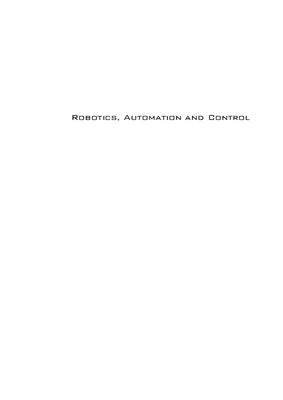First published October 2008
Printed in Croatia
ISBN 978-953-7619-18-3
504 p.
This book was conceived as a gathering place of new ideas from academia, industry, research and practice in the fields of robotics, automation and control. The aim of the book was to point out interactions among the various fields of interests in spite of diversity and narrow specializations which prevail in the current research.
We believe that the resulting collection of papers fulfills the aim of the book. The book presents twenty four chapters in total. The scope of the topics presented in the individual chapters ranges from classical control and estimation problems to the latest artificial intelligence techniques. Moreover, whenever possible and appropriate, the proposed solutions and theories are applied to real-world problems.
The common denominator of all included chapters appears to be a synergy of various specializations. This synergy yields deeper understanding of the treated problems. Each new approach applied to a particular problem, may enrich and inspire improvements of already established approaches to the problem.
We would like to express our gratitude to the whole team who made this book possible. We hope that this book will provide new ideas and stimulation for your research.
Printed in Croatia
ISBN 978-953-7619-18-3
504 p.
This book was conceived as a gathering place of new ideas from academia, industry, research and practice in the fields of robotics, automation and control. The aim of the book was to point out interactions among the various fields of interests in spite of diversity and narrow specializations which prevail in the current research.
We believe that the resulting collection of papers fulfills the aim of the book. The book presents twenty four chapters in total. The scope of the topics presented in the individual chapters ranges from classical control and estimation problems to the latest artificial intelligence techniques. Moreover, whenever possible and appropriate, the proposed solutions and theories are applied to real-world problems.
The common denominator of all included chapters appears to be a synergy of various specializations. This synergy yields deeper understanding of the treated problems. Each new approach applied to a particular problem, may enrich and inspire improvements of already established approaches to the problem.
We would like to express our gratitude to the whole team who made this book possible. We hope that this book will provide new ideas and stimulation for your research.

